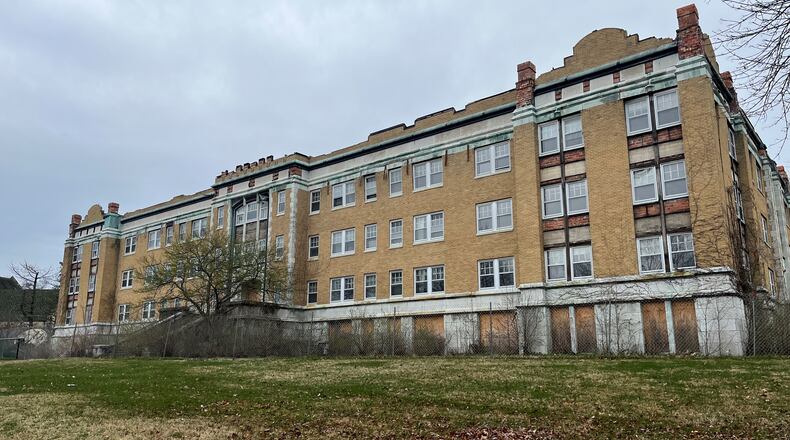Blight “increases crime, decreases property values and maintenance, creates a certain sense of resident hopelessness and can establish an irretrievable downward spiral of property blight and abandonment,” said Mike Grauwelman, executive director of the Montgomery County Land Bank.
Late last year, the state of Ohio officially launched a new grant program that will distribute $150 million for blight removal and site revitalization.
Each one of Ohio’s 88 counties qualify for a $500,000 minimum grant award, but land banks and “lead entities” also can apply for some of the remaining funds (roughly $106 million or more) on a first-come, first-serve basis.
Land banks and lead entities must provide a 25% local match if they want demolition funds in excess of the $500,000 that has been set aside for each county.
The Clark County Land Bank, the Greene County Department of Development, the Miami County Department of Development and the Warren County Port Authority only requested $500,000 grants or less, which do not require a local match.
But the Montgomery County Land Bank has submitted an application asking for $14.7 million in state funds, which it proposes to pair with a $4.9 million local match.
The land bank says it wants to raze and remediate 263 residential properties and 25 commercial properties.
Most targeted properties are in Dayton (174), but others are in Trotwood (37); Harrison Twp. (33); Jefferson Twp. (19); Riverside (eight) and Miamisburg and West Carrollton (6 each). A few others are in Huber Heights, Perry Twp., Englewood and Clayton.
The land bank wants to bulldoze the huge, vacant and deteriorating Fout Hall building on the former United Theological Seminary campus, located along the 1700 block of Harvard Blvd. in northwest Dayton.
The campus has been transformed by the Omega Community Development Corp. and its partners, who have helped bring more than $24 million in new investment to the property, including new senior housing and the Hope Center for Families.
Other old and decaying buildings on the campus already have been knocked down, including a library, an administrative building and Roberts Hall.
The land bank also has requested funding to help pay for interior demolition and asbestos abatement in the northern section of the Dayton Arcade, Grauwelman said.
Developers have invested more than $90 million into rehabbing the arcade complex’s southern buildings, and the next phase of redevelopment will be focused on the northern sections and will create a new commercial kitchen incubator and hotel product.
The land bank also wants to knock down a large, two-story office building at 4032 Linden Ave. in Riverside, next to the Eastown shopping plaza. The vacant, 60,000-square-foot property is rundown, with broken windows and decaying exteriors.
Credit: Tom Gilliam
Credit: Tom Gilliam
Blight harms neighborhoods and communities, and living near abandoned and nuisance structures can stress people out and make them feel helpless, Grauwelman said.
Demolition can help reduce crime and nuisance activities and improve residents’ well-being and feelings of neighborhood pride, he said.
Grauwelman said he expects to see fierce competition for the state funding since blight issues are widespread across the state and there was no cap on how much applicants can request.
The land bank has helped tear down more than 1,200 structures, at a cost of more than $22 million, Grauwelman said.
Warren County did not apply for state funds beyond the $500,000 match-free grant, port authority officials said, and the requested funding will be for eight non-residential demolition projects, such as the Warren County jail and some maintenance facilities.
The requested funding is for projects in Springboro, Deerfield Twp., Harveysburg and Lebanon.
The Miami County Department of Development proposes using about $417,000 in state funds to clean up blighted properties, said Richard Osgood, director of the department.
The Greene County Department of Development plans to put its $500,000 allocation toward demolition activities for five residential properties in Beavercreek, Fairborn and Caesarscreek Twp. and three commercial buildings in Cedarville, Xenia and Yellow Springs.
The commercial properties are the former Fulmer grocery store at 176 Xenia Towne Square in Xenia; an old commercial building at 154 W. Xenia Ave. in Cedarville; and Antioch College’s old student union at 275 E. North College St. in Yellow Springs.
Commercial property owners are expected to provide matching funds, and the combined value of the demo projects exceed $1 million, counting the local matches.
The Clark County Land Bank wants to put its $500,000 allocation toward demolishing a former food processing plant in Springfield and a former school in the Village of Catawba, said Ethan Harris, the group’s executive director.
The Springfield property is at 2110 W. Jefferson St., near the Mad River, and hopefully its acquisition and remediation will spark more clean-up and beautification efforts along the Mad River, Harris said.
Removing the old school at 115 S. Persimmon St. will have an “immense” impact on the Village of Catawba, Harris said.
“The dilapidated school has sat near the center of the village rotting for over a decade,” he said. “New residential opportunities will be sought for the location once demolition is complete.”
Dayton also has been awarded about $138 million in federal rescue funds, and the city has pledged to spend nearly $16 million on demolition.
The city, which has one of the higher vacancy rates in the state, expects it will be able to remove more than 1,000 properties on its nuisance list.
About the Author




